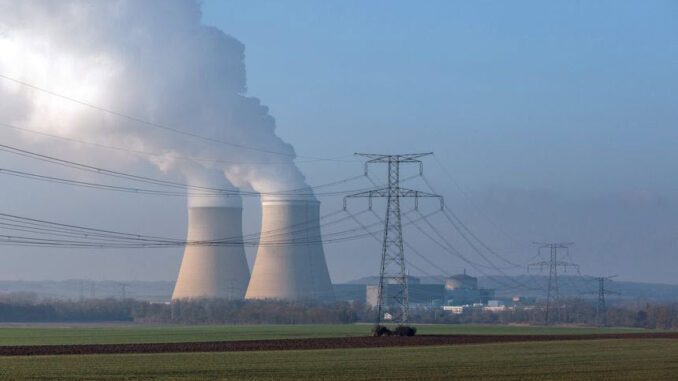
ENB Publishers Note: Last year when the COP26 snuck the language that it was approving natural gas and nuclear as a necessary part of the migration to renewables, and they had the same language that was used in the United States Infrastructure bill that was written even before then. The energy crisis has been painful getting here and will be even more painful getting out of the mess we find ourselves in after 20 years of bad energy policies. Very interesting article from the WSJ Opinion section.
Could this winter’s energy crisis be shocking Europe into climate realism? Believe it or not, the European Union is set to include nuclear and natural gas on the list of industries eligible for “green” investments. Someone, please pass the smelling salts to the Sierra Club.
At issue is the so-called taxonomy for classifying environmentally sustainable investments. This new list is intended to create a uniform definition of activities that qualify as green for corporate disclosures, climate-oriented investing, and carbon-related government spending. The Brussels green list represents the largest regulatory effort to date to pin down what “sustainable” means in relation to finance.
The wonder of wonders, nuclear and natural gas make the cut. The draft taxonomy released late on New Year’s Eve deems investment in nuclear power sustainable as long as the investment is made before 2045 and a plan is in place to dispose of the waste. The draft also includes natural-gas power plants built by 2030, subject to emissions limits and as long as they replace heavier-emitting plants.
The usual suspects are furious for the usual reasons. Berlin lobbied hard against including nuclear energy on the permitted list. That’s the same Germany where households and businesses pay some of Europe’s highest power prices while the government shuts down the country’s remaining nuclear plants, pursues expensive renewable boondoggles, and burns more coal. Some greens bristle at including any fossil fuel on the list.
The critics are partly right that politics is at play. France, which relies heavily on nuclear energy and where the nuclear industry is an important employer, lobbied Brussels to include that power source. Other European countries lobbied Brussels so they could continue investing in natural-gas power.
This is the rarest of cases in climate policy where the politics align with energy reality. If environmentalists mean what they say about the urgency of cutting CO2 emissions, nuclear is the only widely available power source that’s zero-emitting and more reliable than wind or solar. In a world far from ready to wean itself off fossil fuels, natural gas stands out as much lower-emitting than others. The growth in natural gas to account for about one-third of United States electricity generation in 2019 helps explain the roughly 14% decline in gross CO2 emissions since the mid-2000s.
In a smarter world, the market would have been allowed to figure this out. The new EU taxonomy still represents a destructive form of winner-picking industrial policy and has flaws. A big one is the arbitrary time limit on investments in nuclear and gas plants.
But at least Europe is correcting some of the errors of its last generation of green industrial policy. Ending the regulatory bias against natural gas, in particular, will balance the scales after subsidies and mandates for renewables made natural gas uneconomical and steered investment toward cheaper but dirtier coal.
All of this has implications for the U.S., where the Biden Administration is still fantasizing that solar and wind power can soon replace all fossil fuels. If Europe can admit the truth, how about the White House?
